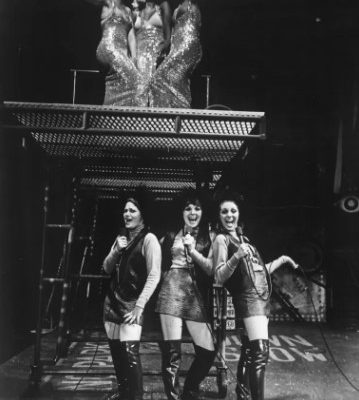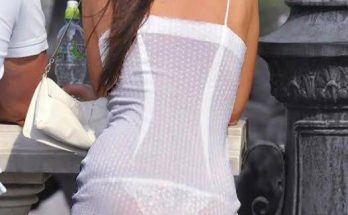It began in the shadows of a New York theater — a man, a woman, and a moment that would define not only their creative lives but their hearts.
Woody Allen reflected on Diane Keaton’s life, recalling the woman whose presence could captivate a room. In his farewell, he shared memories of a rare and unforgettable spirit who first captured his heart long before she became his creative partner.
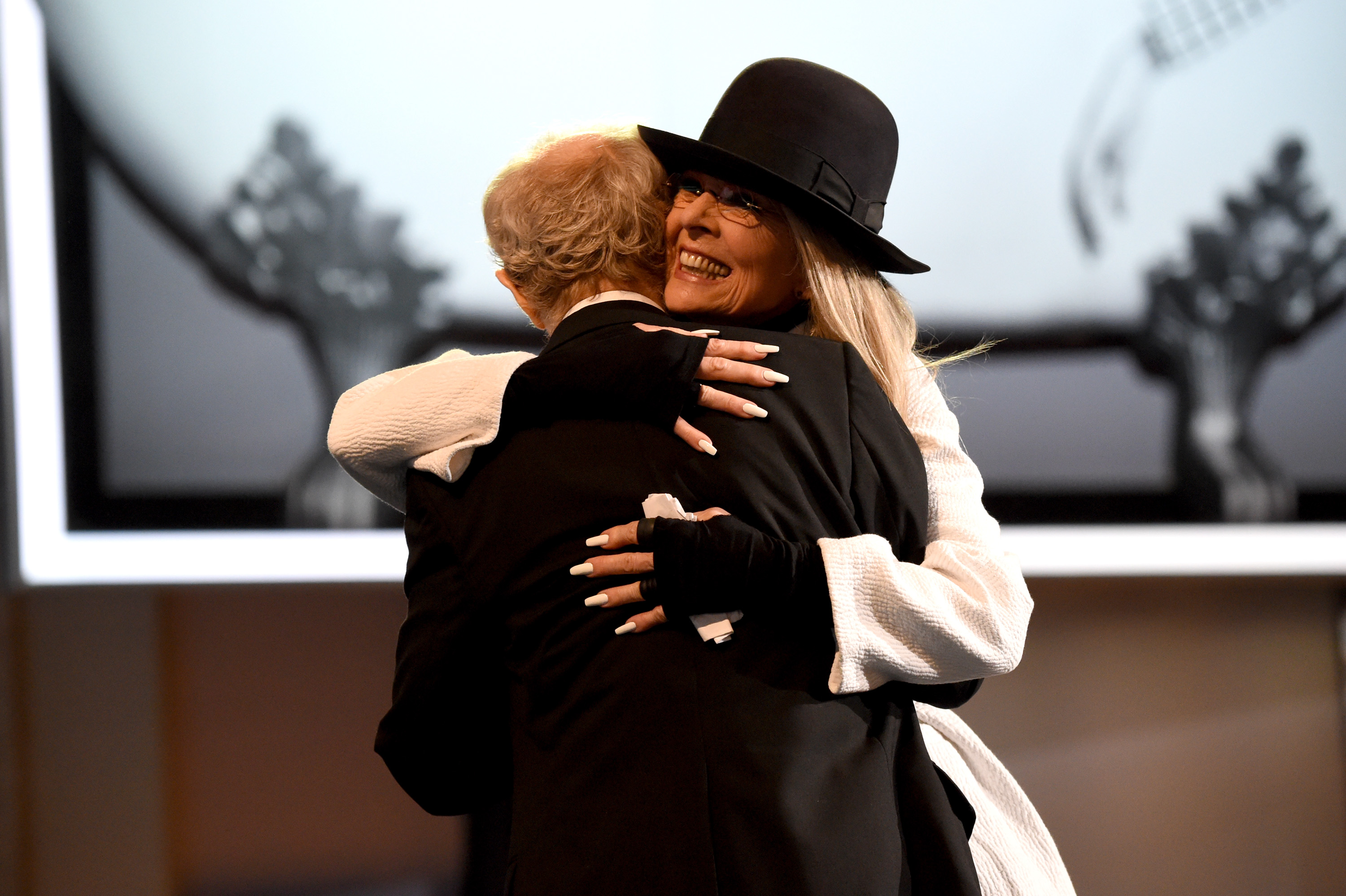
Woody Allen and Diane Keaton onstage at American Film Institute’s 45th Life Achievement Award Gala Tribute to Diane Keaton at Dolby Theatre on June 8, 2017 in Hollywood, California | Source: Getty Images
From Coat Check to Center Stage: A Star Is Born
Allen first saw Keaton at an audition and was immediately struck by her lanky beauty. He thought that she had the adventurous spirit of Huckleberry Finn if he were a young woman. Fresh out of Orange County, she had moved to Manhattan to pursue acting.
The actress worked as a coat check girl before landing a small part in the musical “Hair,” a role that eventually led to her taking the lead.
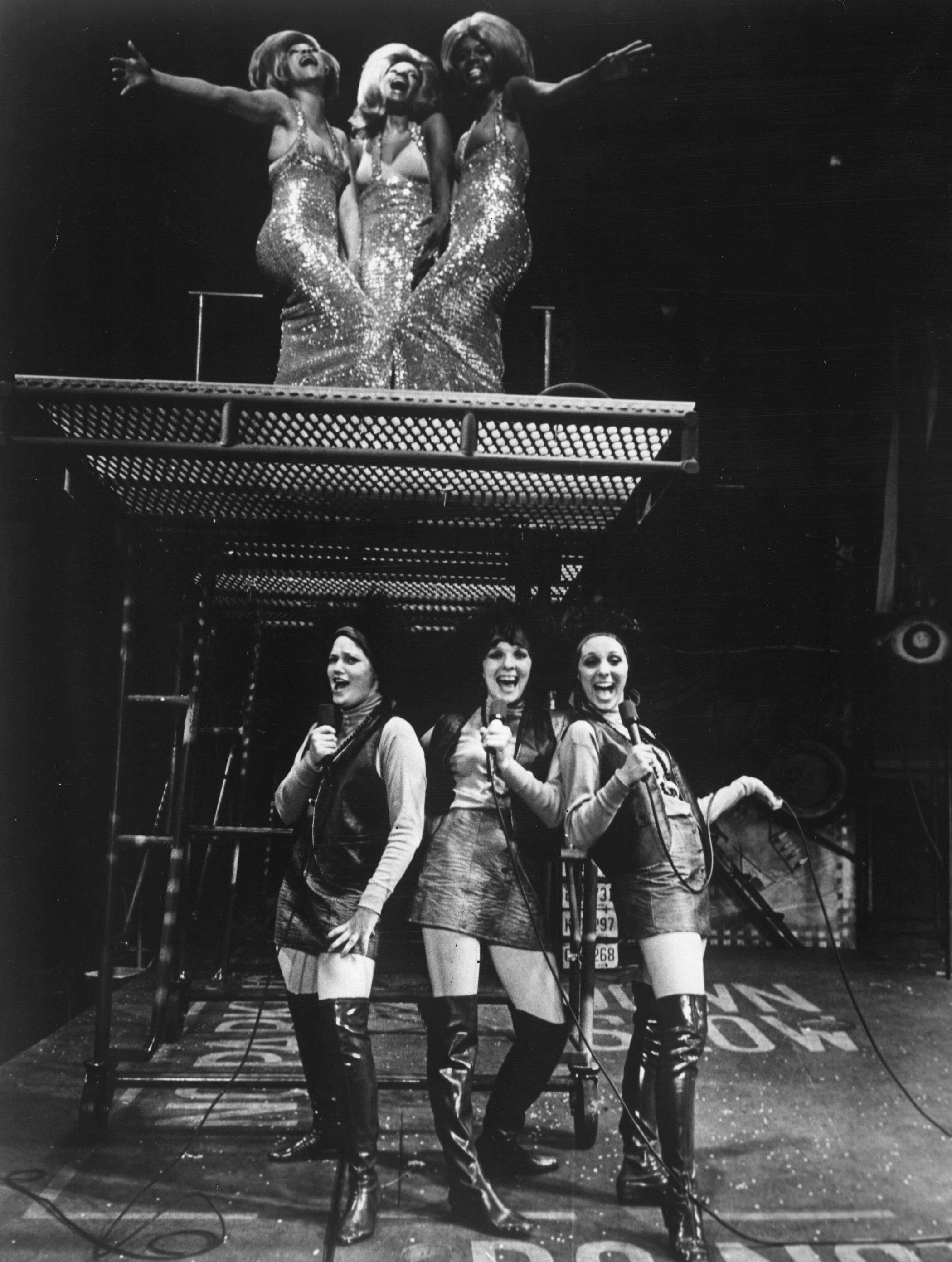
Emmaretta Marks, Melba Moore, and Lorri Davis sing above, while below Suzannah Norstrand, Diane Keaton, and Natalie Mosco hymn in a scene from “Hair” at the Biltmore Theatre in 1968 | Source: Getty Images
Their paths officially crossed when Allen and producer David Merrick were casting for his play “Play It Again, Sam” at the Morosco Theatre. Merrick had heard about a promising actress from acting coach Sandy Meisner, and when Keaton auditioned, she instantly impressed both men.
There was only one concern — she seemed taller than Allen, something they feared might draw jokes. “Like two schoolkids, we stood back-to-back on the stage of the Morosco and measured. Fortunately, we were the same height, and Merrick hired her,” shared Allen.
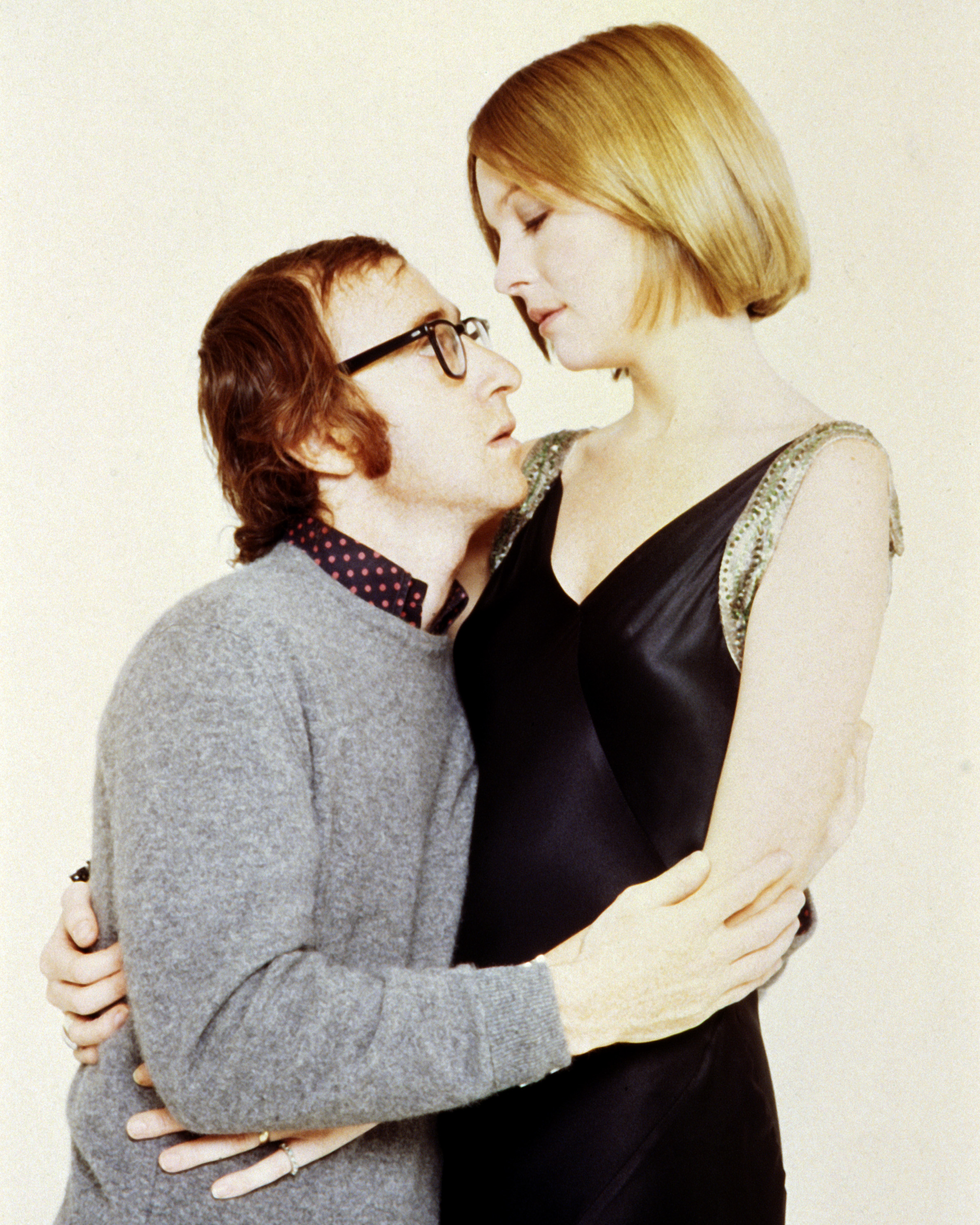
Woody Allen and Diane Keaton in a publicity still for the film “Play It Again, Sam” in 1972 | Source: Getty Images
An Unexpected Romance Blossoms in Silence
During the first week of rehearsals, neither spoke much, both too shy to start a conversation. That changed when they happened to take a break at the same time and grabbed a quick meal together at a small spot on Eighth Avenue.
That brief encounter marked the beginning of a friendship that would soon become something more. “The upshot is that she was so charming, so beautiful, so magical, that I questioned my sanity. I thought: Could I be in love so quickly?” penned Allen.
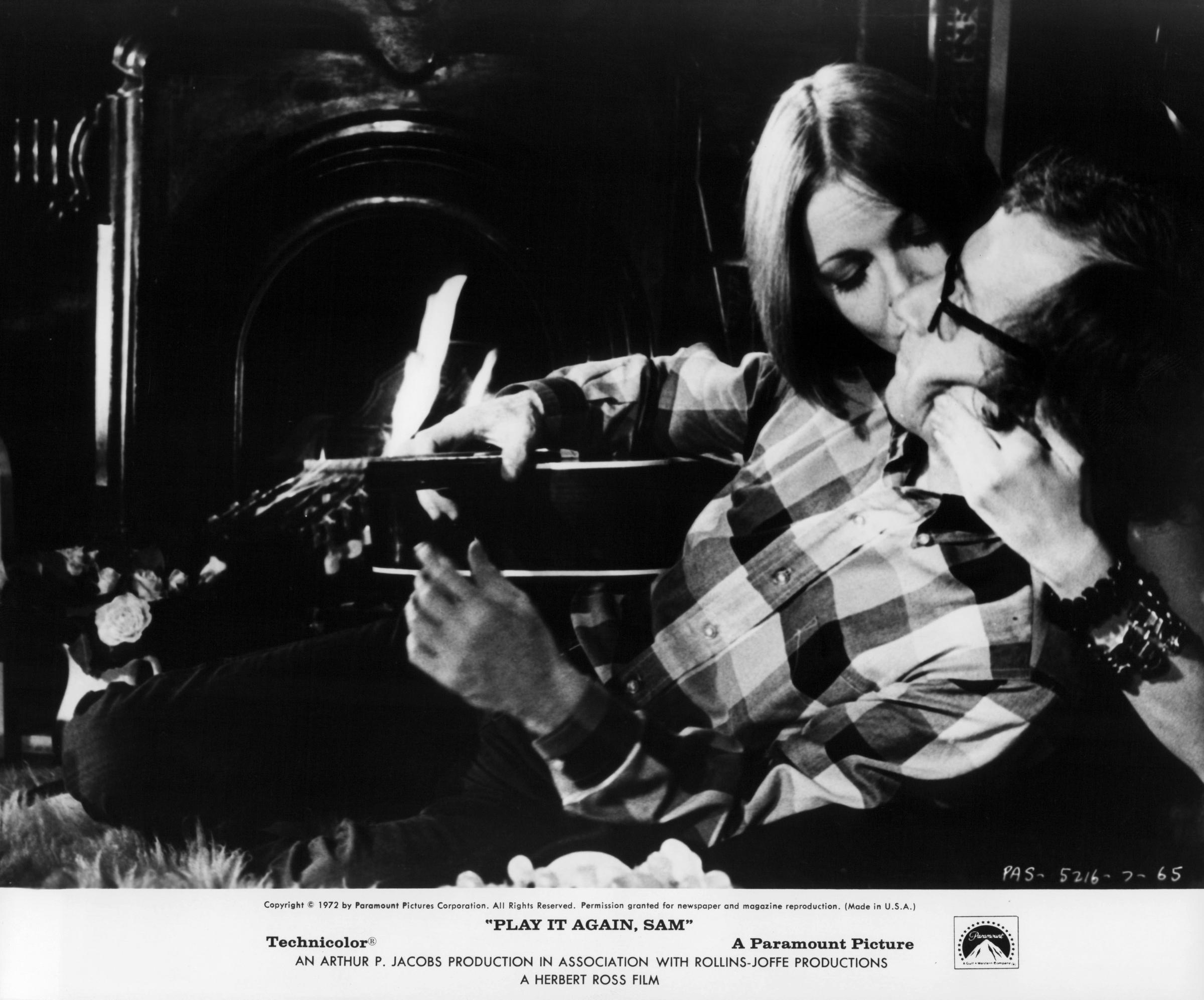
Woody Allen and Diane Keaton in “Play It Again, Sam” in 1972 | Source: Getty Images
Looking back, he described Keaton as truly incomparable. Though he acknowledged it was grammatically incorrect to say “most unique,” he felt the phrase fit her perfectly.
Her radiant smile and infectious laugh, he said, could light up any room she entered. These qualities made her unlike anyone else the world has ever known.
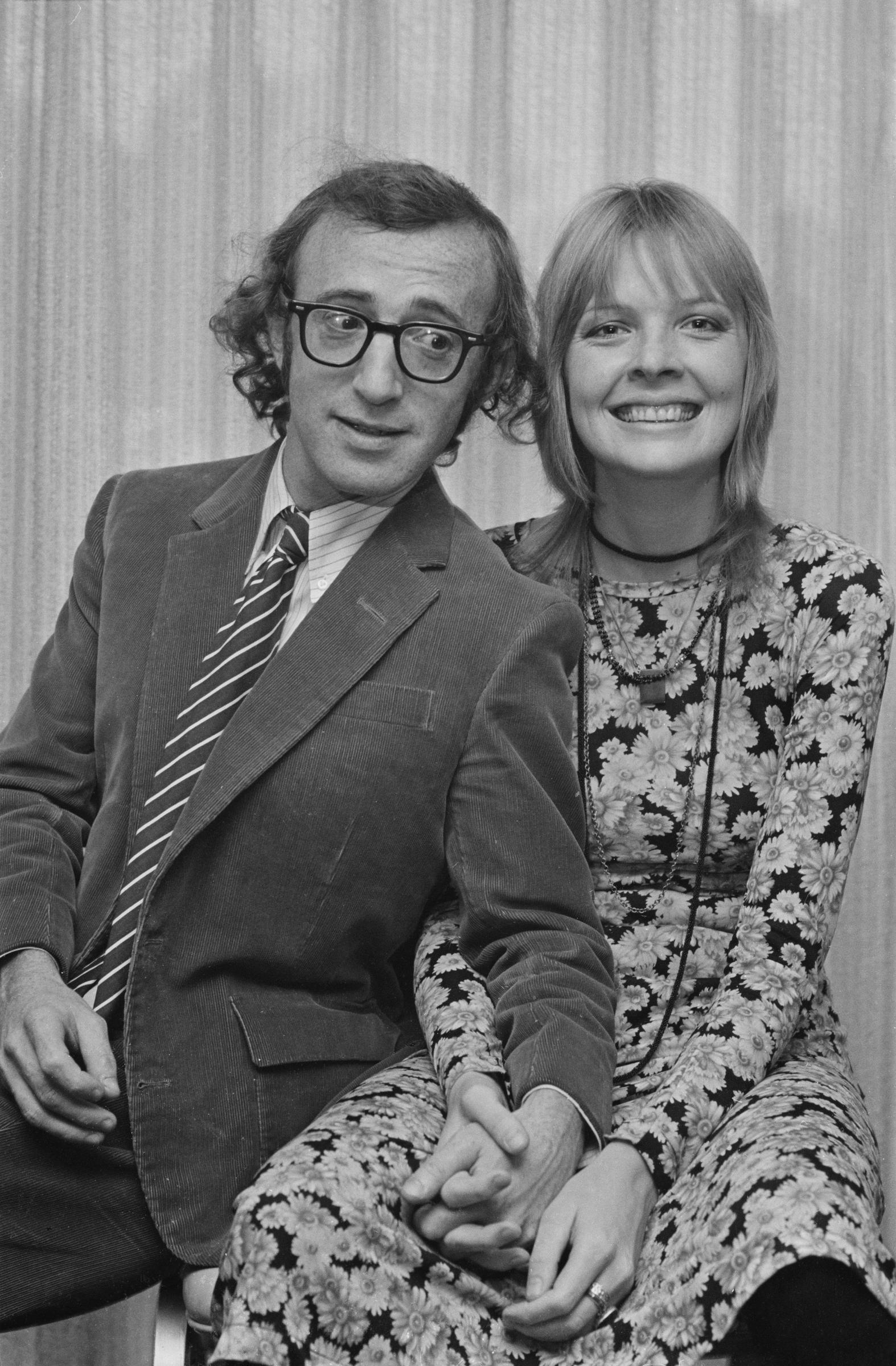
Woody Allen and Diane Keaton at the Hilton Hotel, London, on October 18, 1970 | Source: Getty Images
His Muse, His Mirror, His Measure of Success
By the time “Play It Again, Sam” premiered in Washington, D.C., Allen and Keaton had become romantically involved. He later shared his first film with her in private, expecting her to be brutally honest and tell him it was terrible.
Instead, after watching “Take the Money and Run,” she described it as “very funny and very original.” “Its success proved her correct and I never doubted her judgement again. I showed her every film I made after that and grew to care only about her appraisals,” noted Allen.
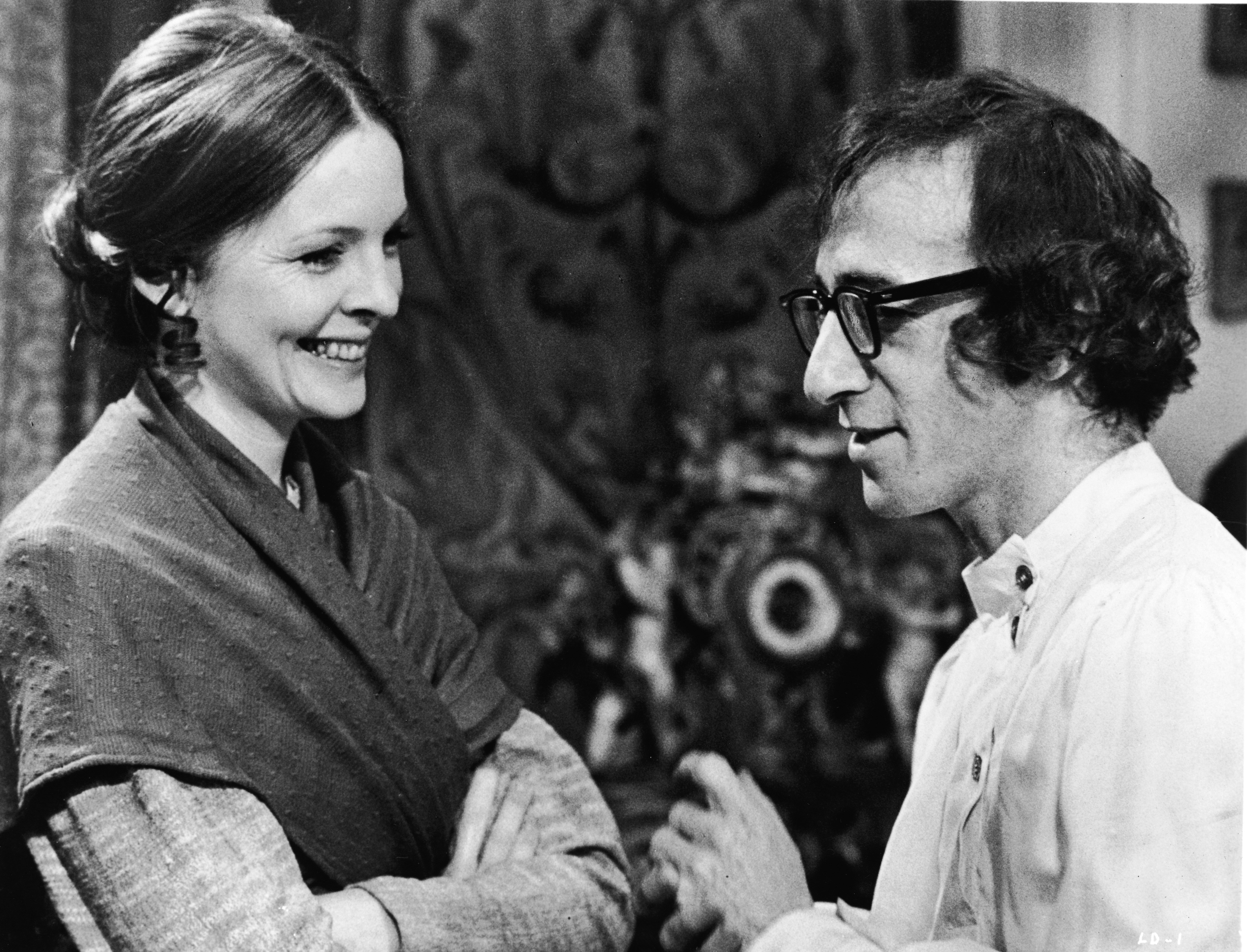
Diane Keaton and Woody Allen share a laugh in a scene from “Love and Death” in 1975 | Source: Getty Images
He continued, “As time went on I made movies for an audience of one, Diane Keaton. I never read a single review of my work and cared only what Keaton had to say about it.”
Allen explained that if Keaton liked one of his films, he considered it an artistic success. When she was less enthusiastic, he used her feedback to reedit and improve it until she felt more satisfied with the result.
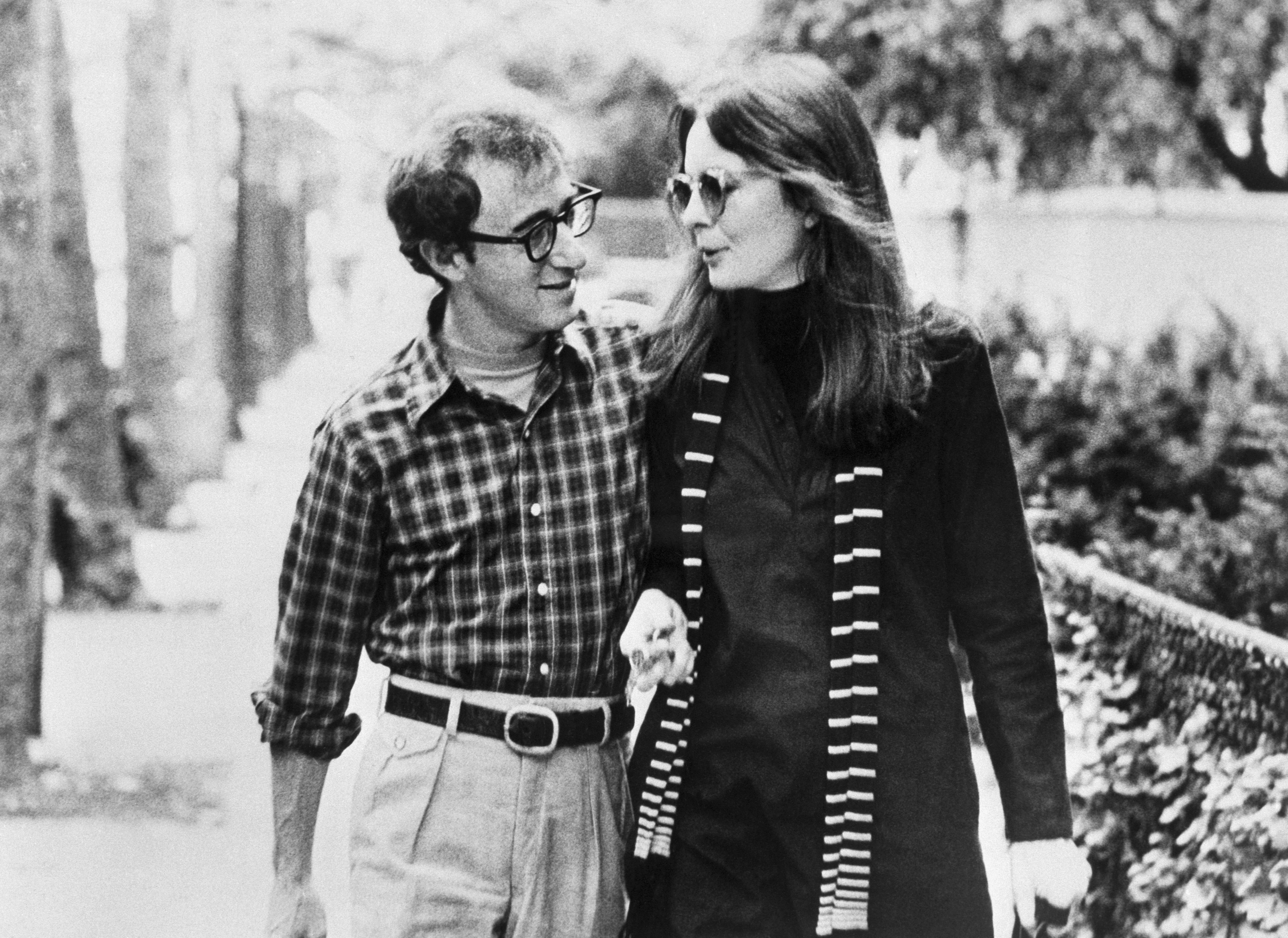
Woody Allen and Diane Keaton in “Annie Hall” in 1977 | Source: Getty Images
Life Together: Laughter, Talent, and Tenderness
Living under the same roof, Allen saw her not only as a partner but as a true artist. “I was seeing the world through her eyes. She had huge talent for comedies and drama but she could also dance and sing with feeling,” Allen divulged.
He described Keaton as a multi-talented artist who wrote books, practiced photography, created collages, decorated homes, and even directed films. “Finally, she was a million laughs to be around,” Allen declared.
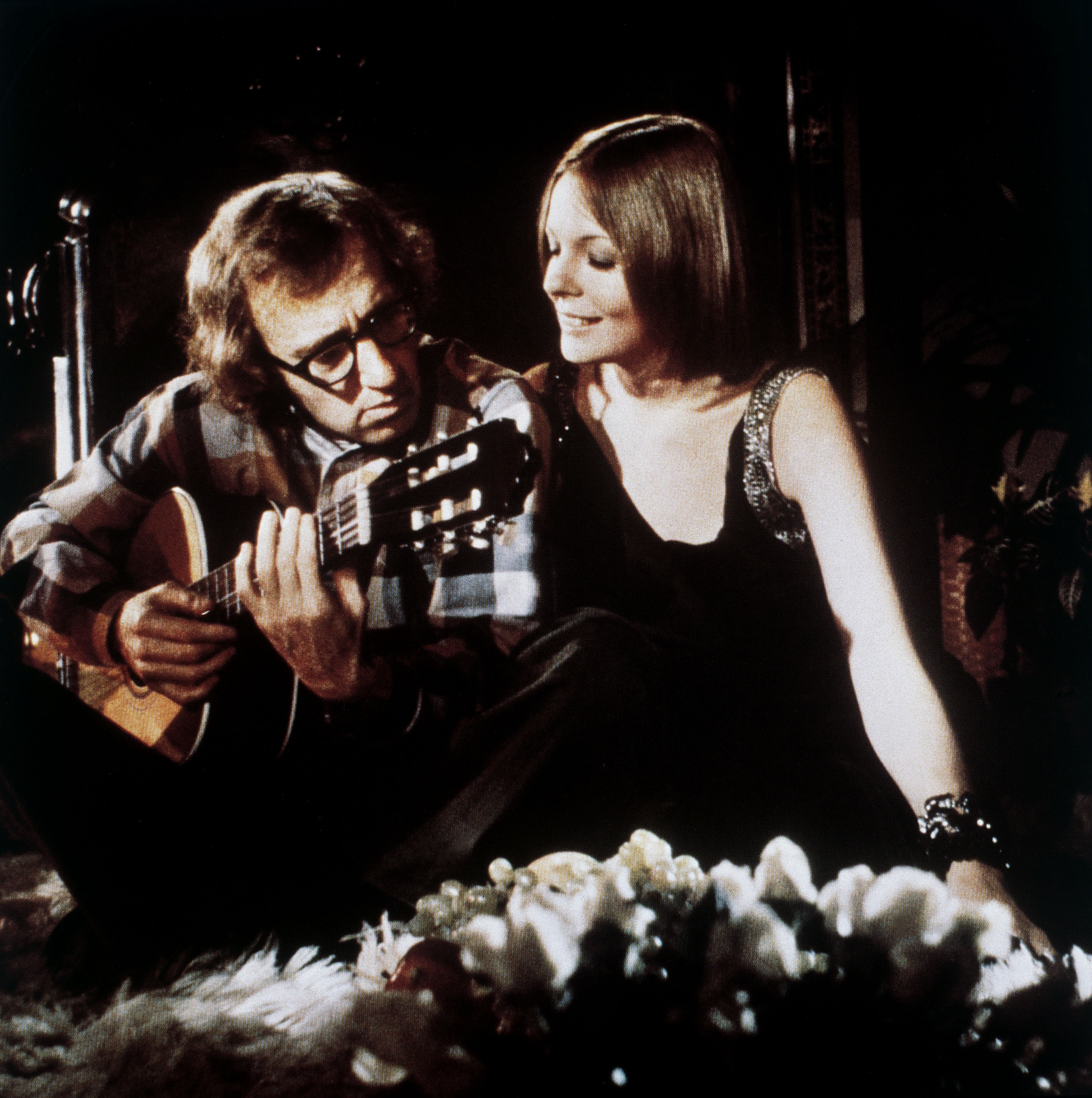
Woody Allen and Diane Keaton in “Play It Again, Sam” in 1972 | Source: Getty Images
Woody Allen also spoke about Keaton’s sharp understanding of theater and art, describing her as someone with a genius insight into both.
She collected paintings and was among the early admirers of Cy Twombly’s work. “Diane Keaton was a hick, a rube, a hayseed. I should have realized it from the start,” he added.
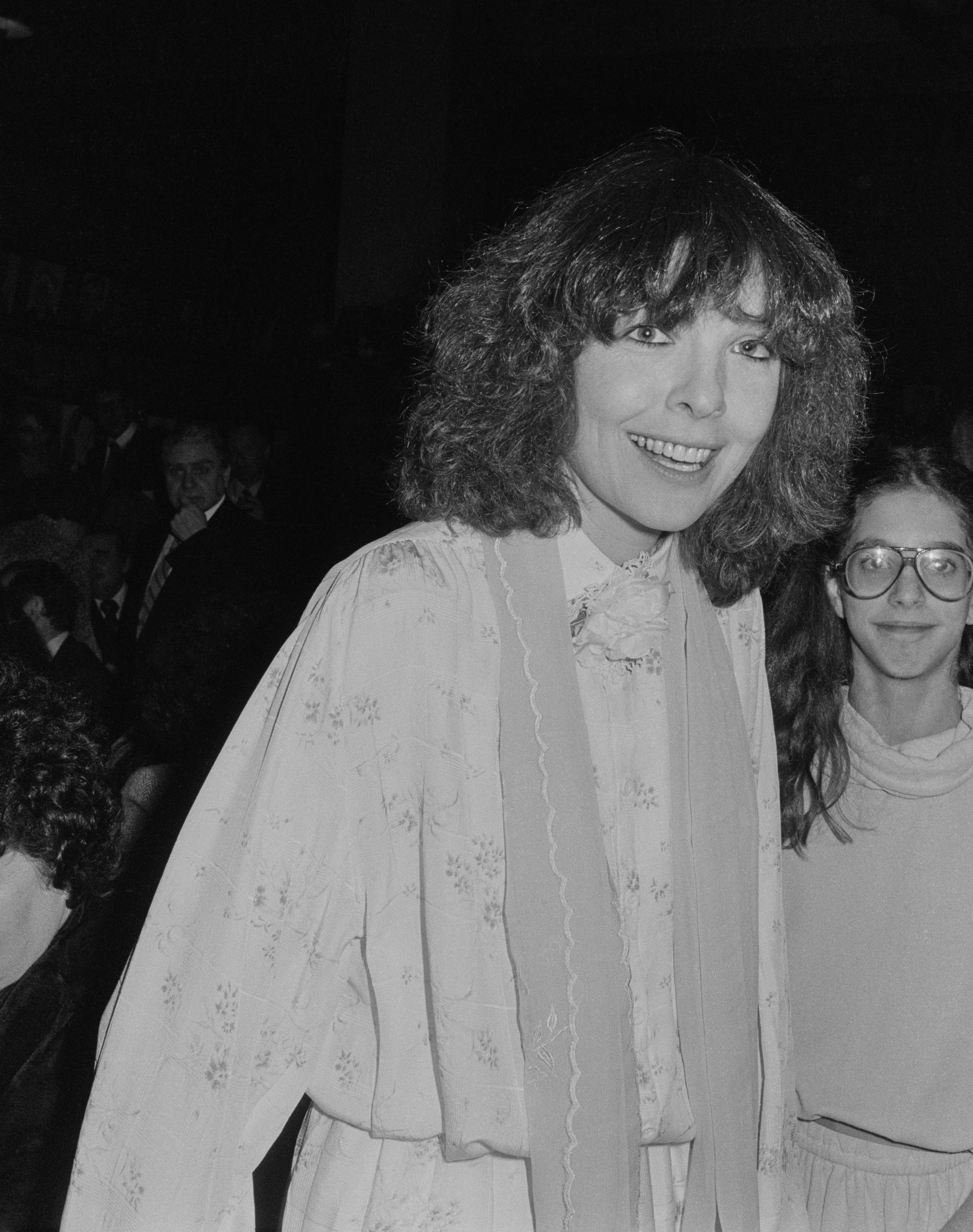
Diane Keaton; circa 1970 in New York | Source: Getty Images
A Pain Hidden in Plain Sight
During their relationship, he often looked into her eyes during candlelit dinners and told her how beautiful she was, only for her to playfully respond with, “Honest Injun.” Allen joked that no one spoke the way she did except characters from an “Our Gang” comedy.
He went on to share that Keaton taught him many things while they lived together, including what he came to understand about bulimia. The two often attended Knicks games before heading to Frankie and Johnnie’s for steak dinners.
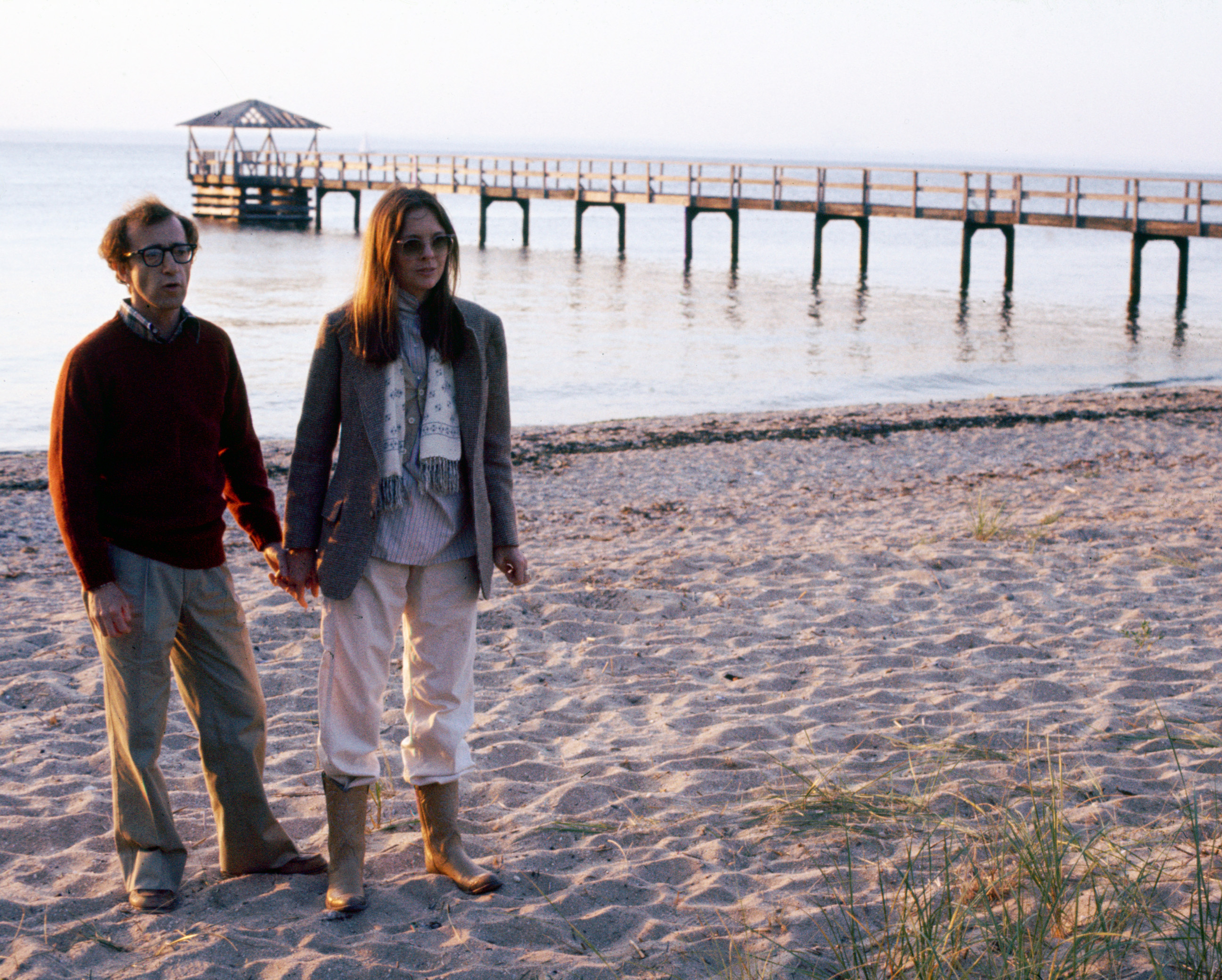
Woody Allen and Diane Keaton in “Annie Hall” in 1977 | Source: Getty Images
Keaton would eat sirloin, hash browns, marble cheesecake, and coffee, then later at home, she would toast waffles and make a large taco filled with pork. Allen was always amazed by how much she could eat given her slim frame.
“Only years later when she wrote her memoir did she describe her eating disorder, but when I was experiencing it, I could only think I’d never seen anyone eat like that outside of a documentary on whales,” Allen noted.
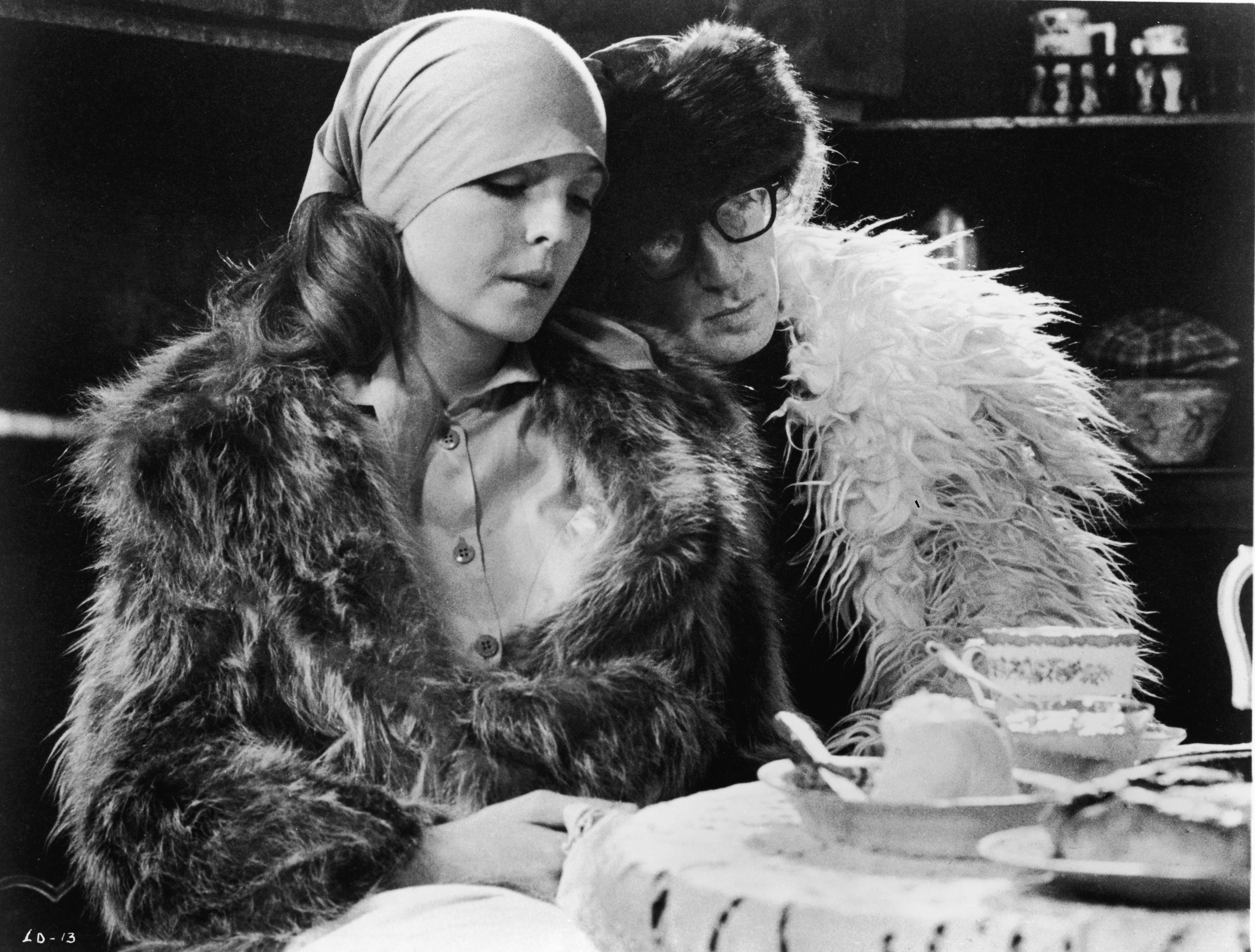
Woody Allen leans his head on the shoulder of Diane Keaton in a scene from “Love and Death” in 1975 | Source: Getty Images
The Farewell That Hurts Most
He now marvels at how Keaton went on to become an award-winning actress and a sophisticated fashion icon, a transformation that continues to amaze him.
The two shared a few personal years together before eventually going their separate ways. “And why we were parted, only God and Freud might be able to figure out,” Allen acknowledged.
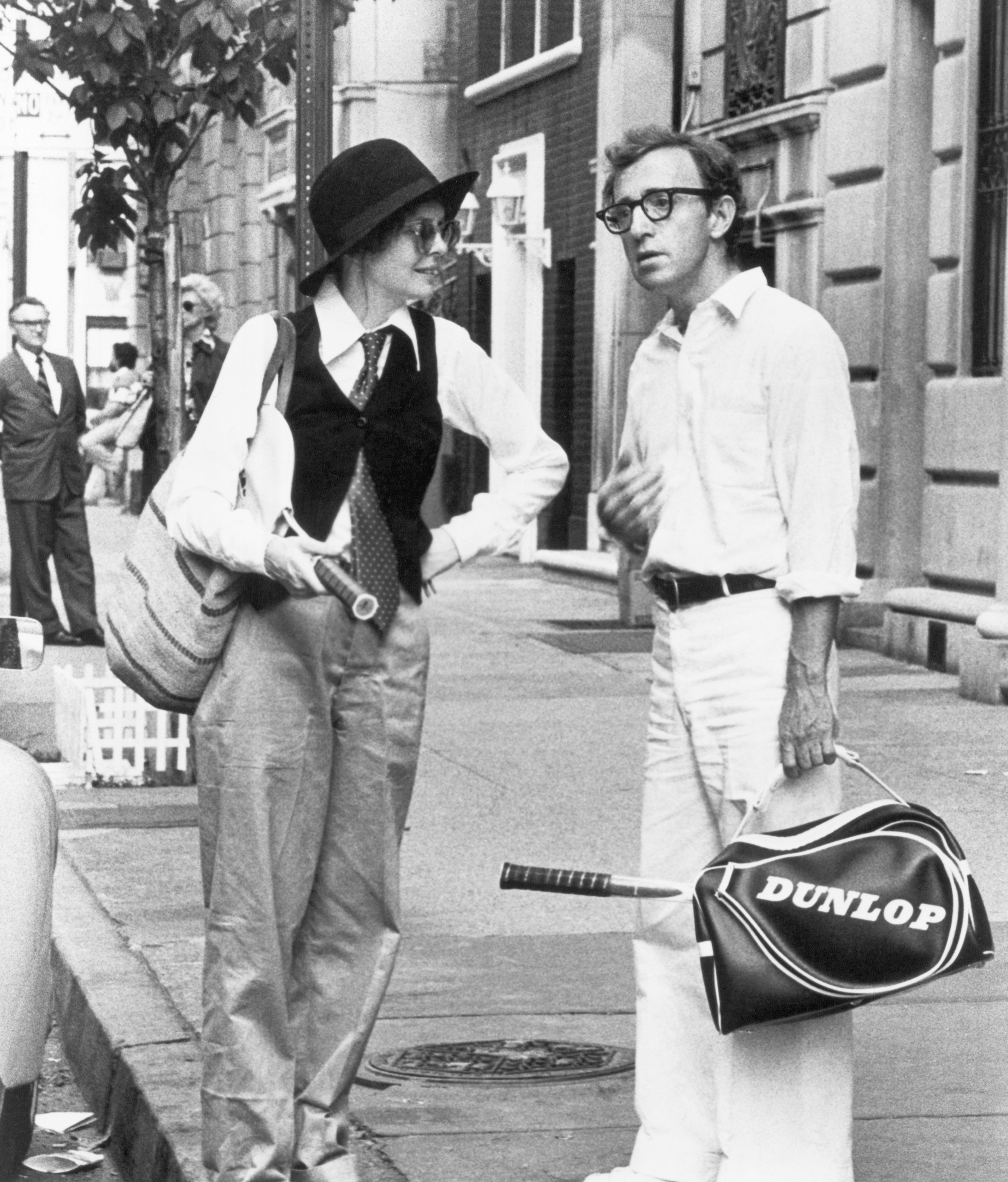
Diane Keaton and Woody Allen in “Annie Hall” in 1977 | Source: Getty Images
After their split, Keaton went on to date other men, all of whom, Allen said, were far more fascinating than he was. As for him, he continued working, still chasing what he called the great masterpiece that remained unfinished the last time he checked.
“I kidded Keaton that we’d wind up — she like Norma Desmond, me like Eric Von Stroheim, once her director, now her chauffeur. But the world is constantly being redefined, and with Keaton’s passing it is redefined once again,” he noted.
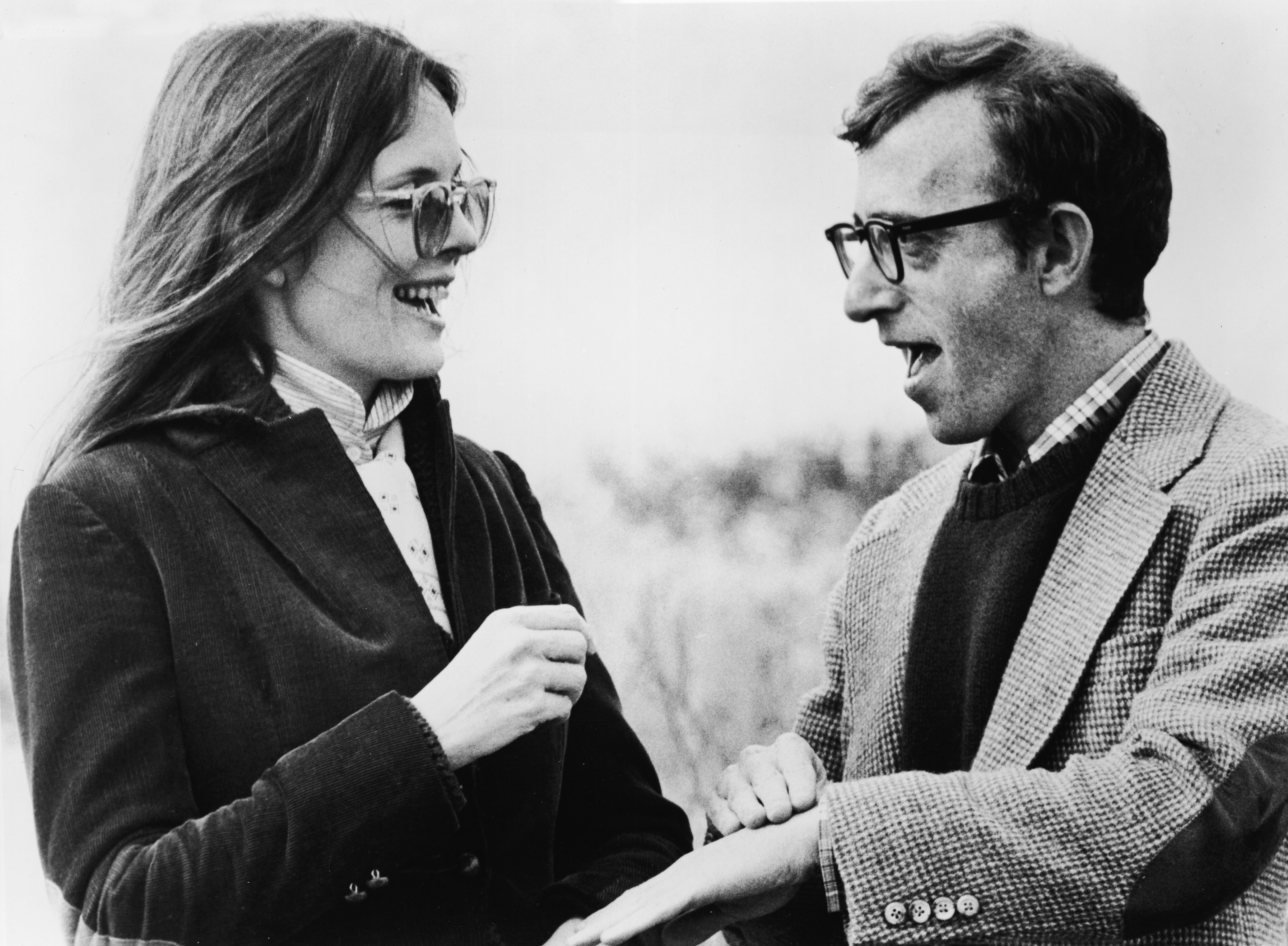
Diane Keaton and Woody Allen in “Annie Hall” in 1977 | Source: Getty Images
Allen reflected that just days ago, the world could still be described as one with Diane Keaton in it, and now it has become one without her — a place he finds much duller in her absence.
Even so, he takes comfort in the lasting presence of her films and the sound of her laughter, which continues to echo in his mind.
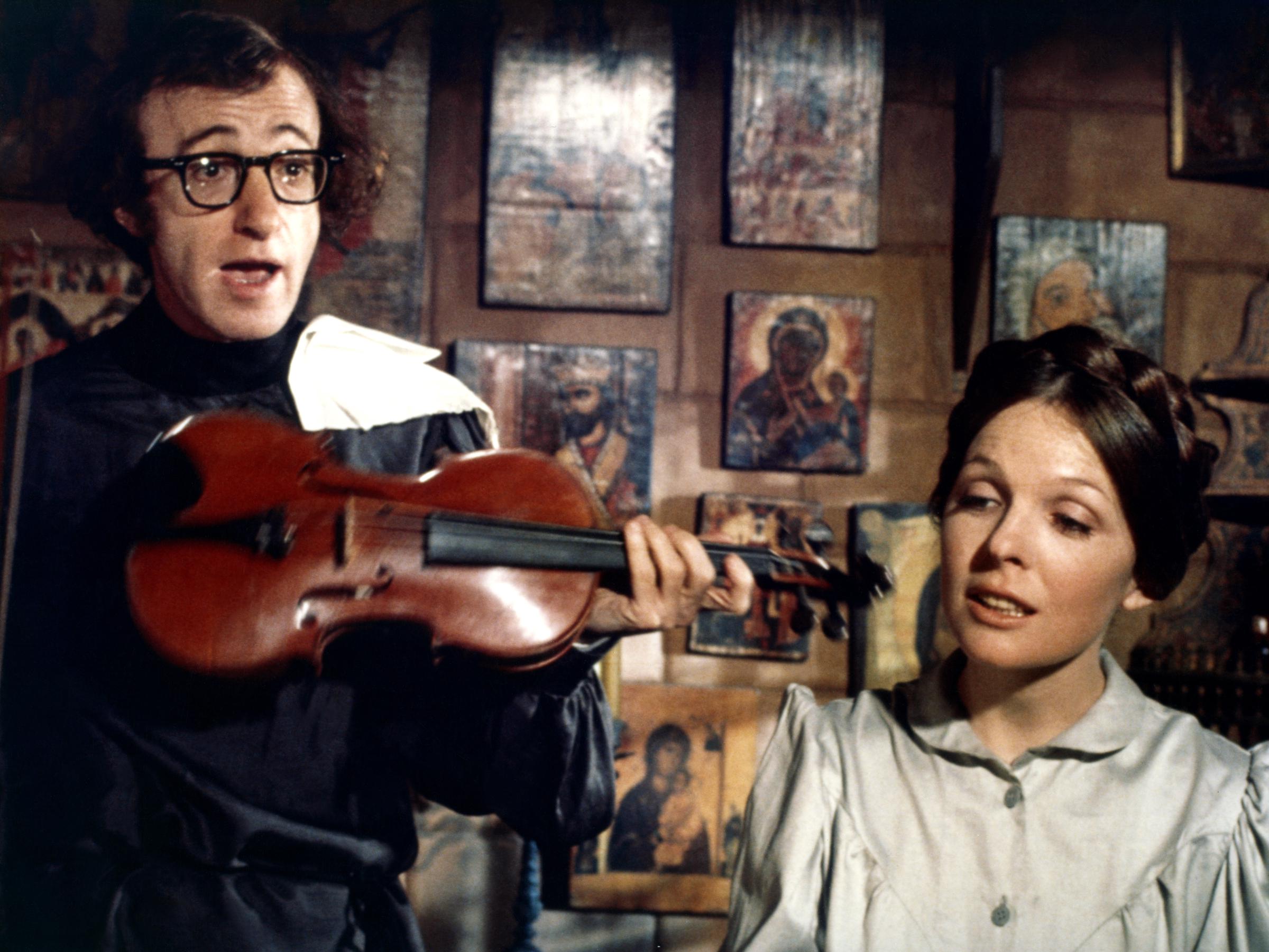
Diane Keaton and Woody Allen in a scene from “Love and Death” in 1975 | Source: Getty Images
Keaton’s Lasting Admiration for Allen
Keaton had also previously spoken about Allen, expressing her deep affection and admiration for him. She shared how much she genuinely adored him during their time working together, especially while filming.
The actress mentioned that Allen initially doubted the potential of “Play It Again, Sam” and viewed it as something simple and familiar.
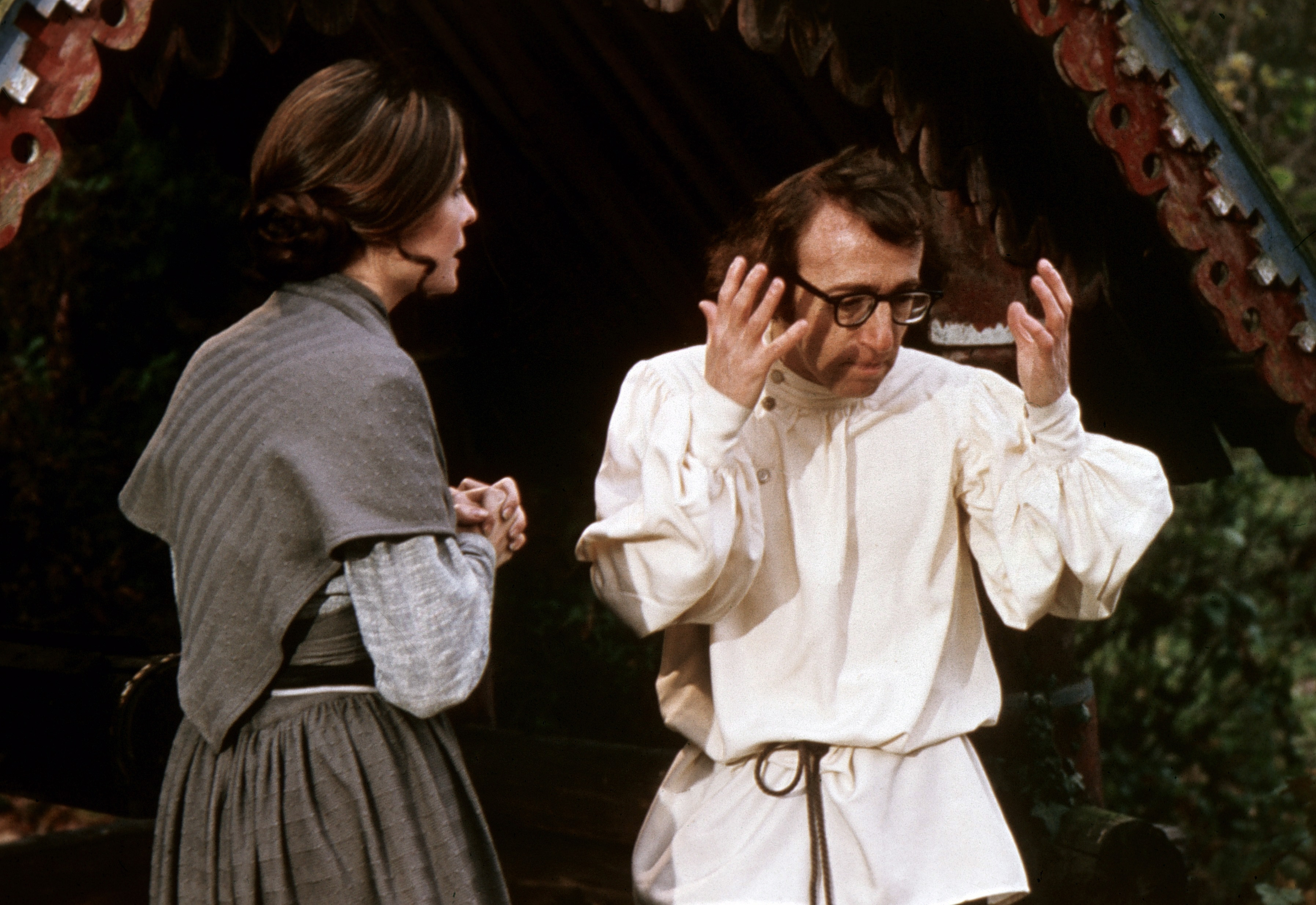
Diane Keaton and Woody Allen in a scene from “Love and Death” in 1975 | Source: Getty Images
Keaton, however, recognized its brilliance from the start and believed in the strength of the story he had written.
The actress gushed, “He’s the strongest person I’ve met in my life. He’s made of steel. And talk about a work ethic – he’s one of the people that really did teach me that you have to work hard. But he wanted to. He’s the most disciplined person I’ve known, with the exception of my dad.”
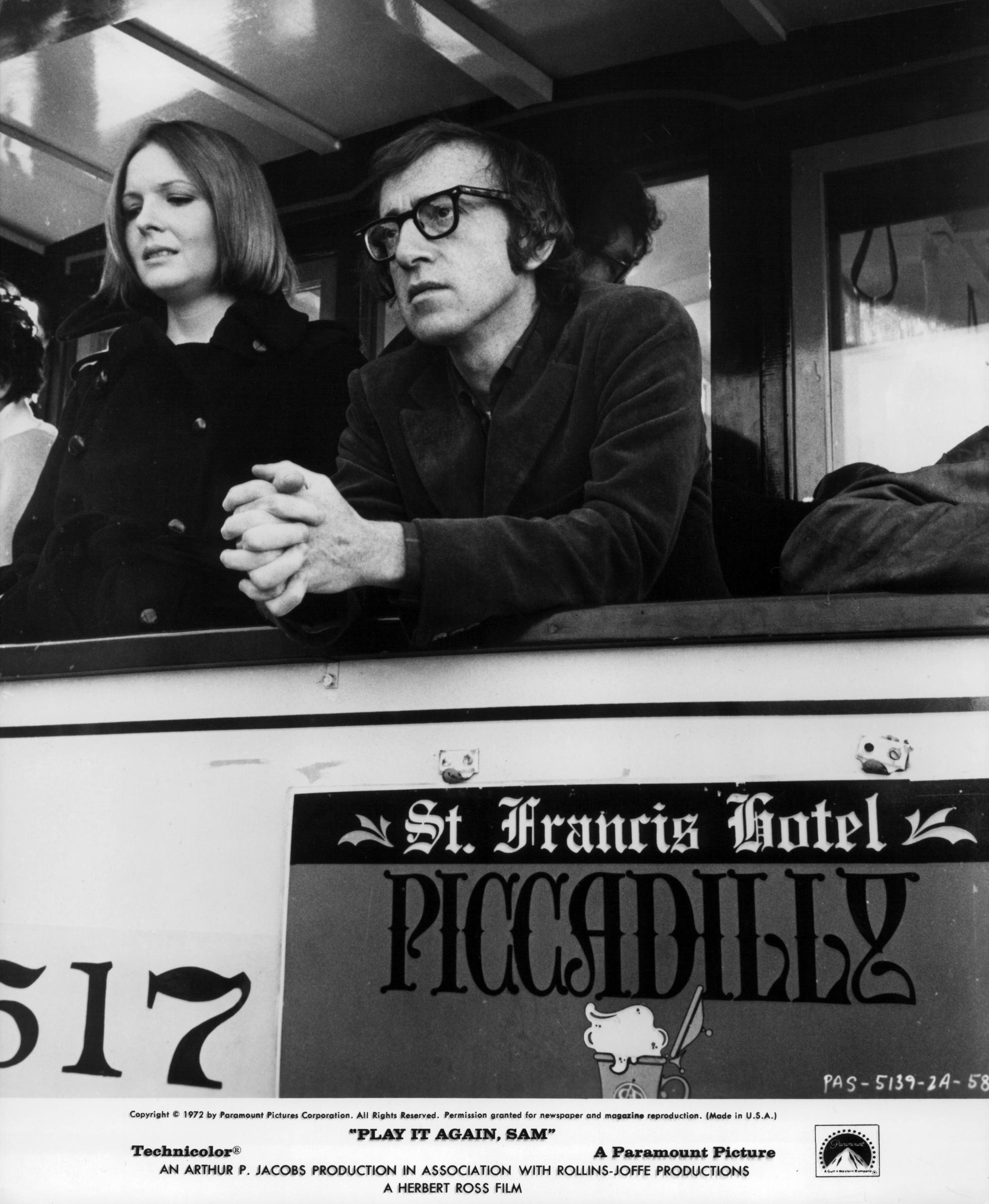
Woody Allen and Diane Keaton in “Play It Again, Sam” in 1972 | Source: Getty Images
Keaton added that, unlike her father, whose focus waned after retirement, Allen’s drive never seemed to fade. She admired how he continued to practice his clarinet, perform with his band, and direct a new film every year.
Allen maintained complete creative control even into his late seventies. To her, his unwavering commitment to his craft was both rare and extraordinary in the history of cinema.
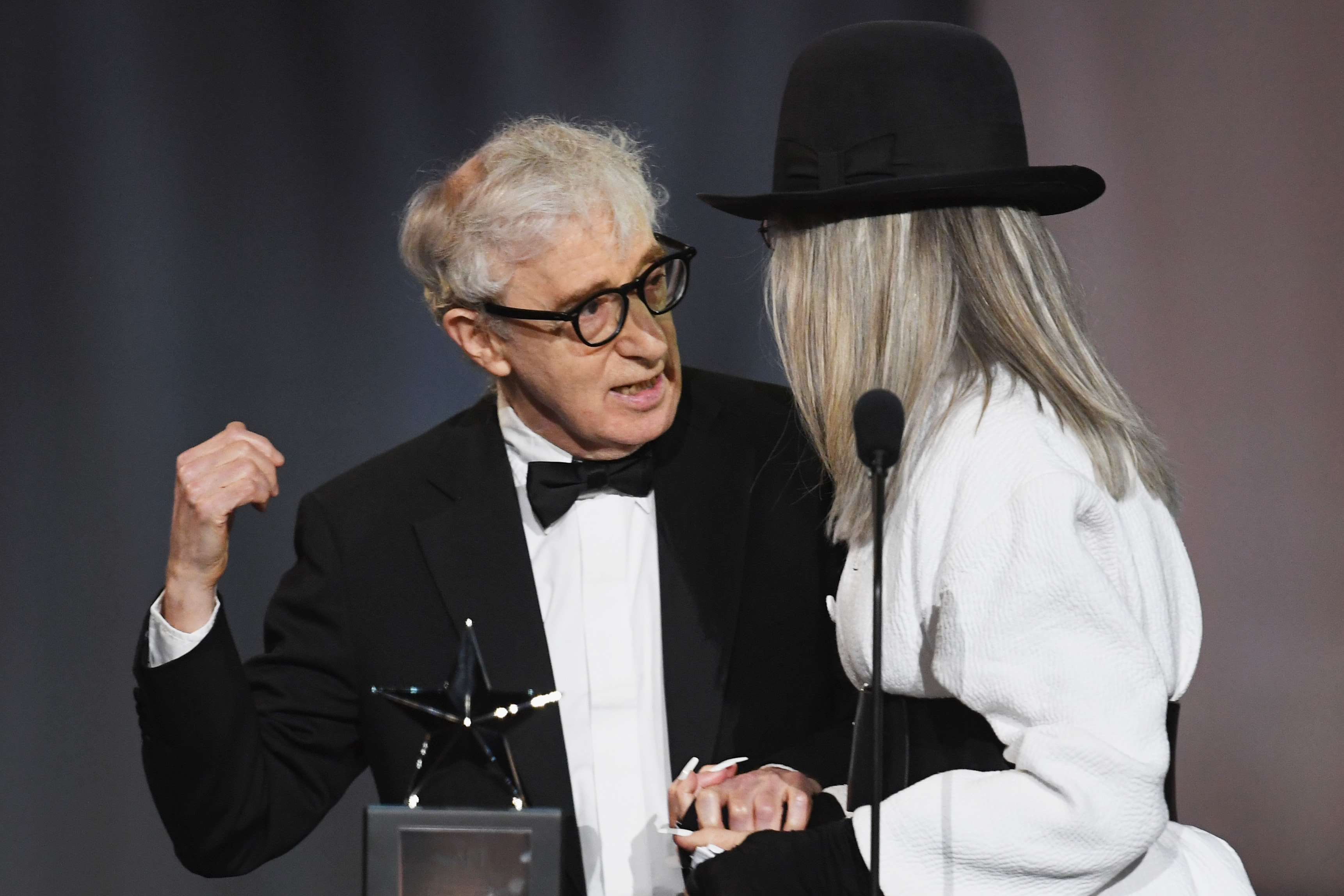
Woody Allen and Diane Keaton onstage at American Film Institute’s 45th Life Achievement Award Gala Tribute to Diane Keaton at Dolby Theatre on June 8, 2017 in Hollywood, California | Source: Getty Images
A Rare, Enduring Devotion
When Allen referred to Keaton as his “north star” in his 2020 memoir, this deeply moved her. She expressed profound gratitude for his influence on her life and career.
“He was so amazing. It always was really special to be with Woody. He was great. He was everything, and he remains [so] to me. He gave me everything. He really did. Woody made it loose. That helped me enormously,” she enthused.
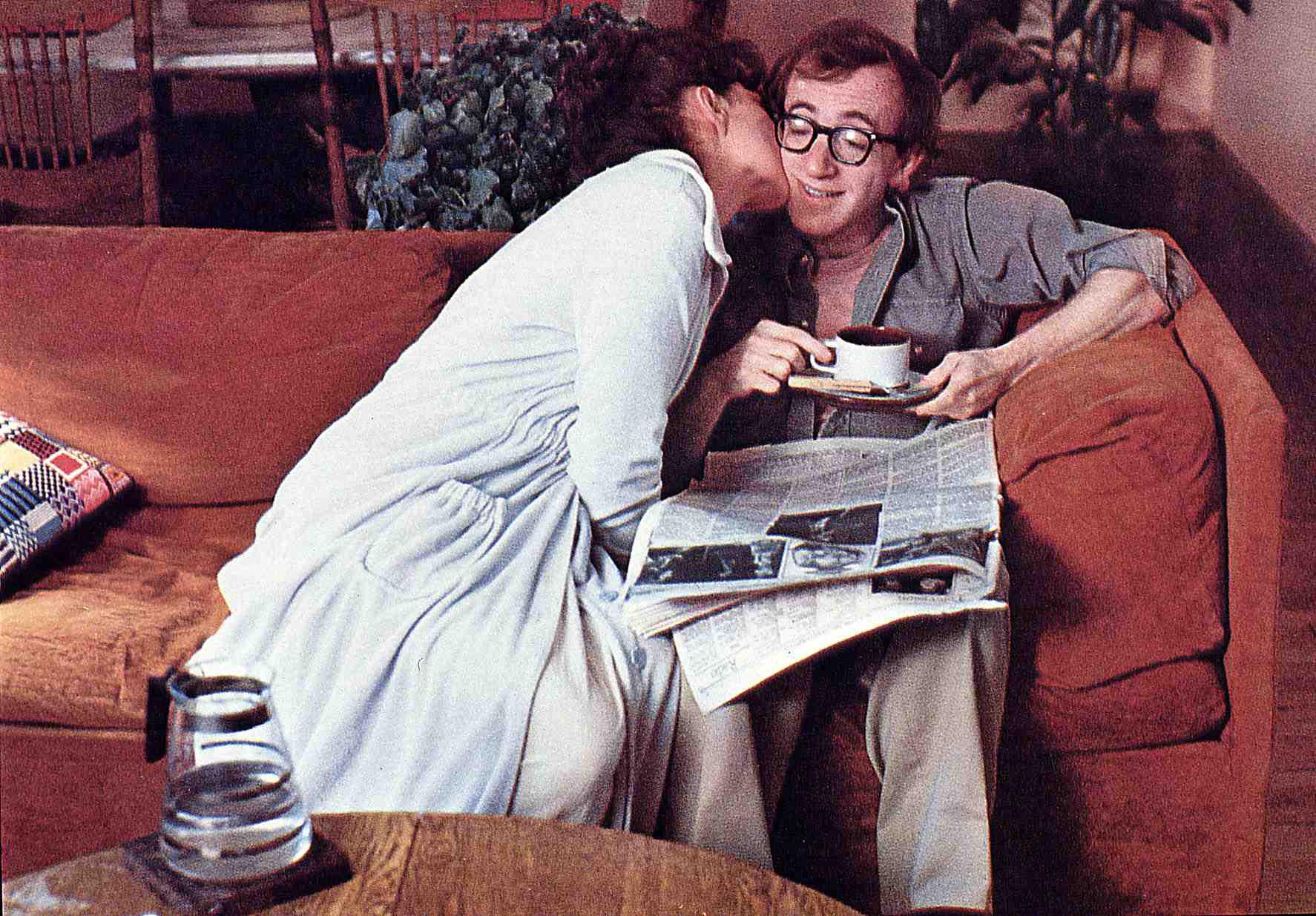
Diane Keaton and Woody Allen on “Annie Hall” in 1977 | Source: Getty Images
In her 2011 memoir “Then Again,” Keaton reflected on the unique dynamic she shared with Allen. The actress recalled, “We were quite the couple, one more hidden than the other. We both wore hats in public, and he always held my hand or, rather, gripped it without letting go.”
She wrote that their relationship, which lasted about three years, was built on a shared fondness for torturing each other about their shortcomings. “He could sling out insults, but so could I. We thrived on demeaning each other,” the actress penned.
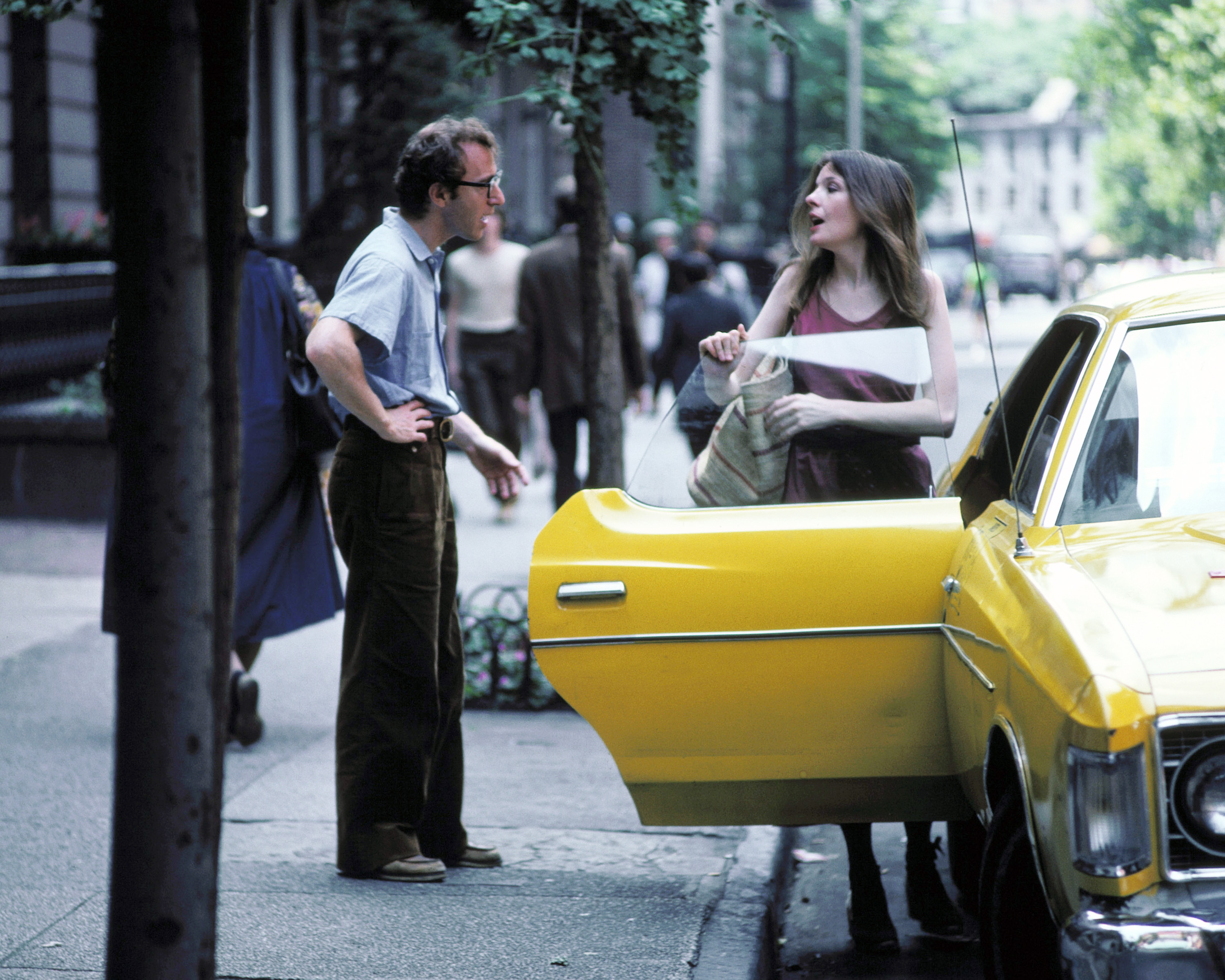
Woody Allen and Diane Keaton in “Annie Hall” in 1977 | Source: Getty Images
They enjoyed this back-and-forth, with Allen’s sharp observations about her personality often being both accurate and amusing. “This bond remains the core of our friendship and, for me, love,” she noted.
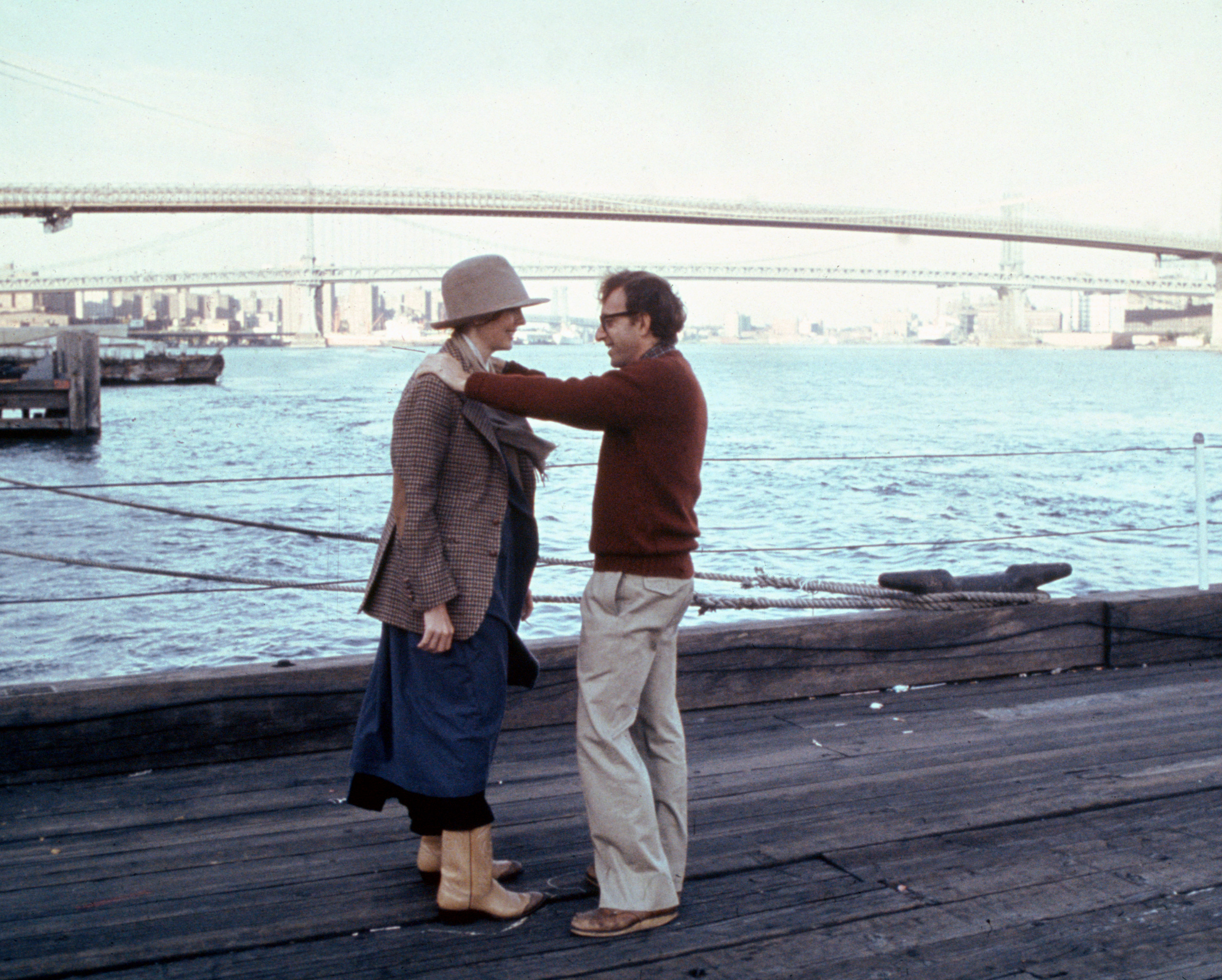
Diane Keaton and Woody Allen in “Annie Hall” in 1977 | Source: Getty Images
Through Decades of Scandal, She Stood by Him
Allen and Keaton rode through both the good and difficult times together. When sexual abuse allegations involving his adoptive daughter, Dylan Farrow, surfaced in the early 1990s, Keaton stood by him. The accusations sparked one of Hollywood’s most publicized controversies, marked by a highly publicized custody battle and decades of divided opinion within the industry and beyond.
Allen, who has consistently denied the claims, was never charged with a crime, while Keaton maintained her support for him. When Keaton was asked directly about Farrow’s accusation — that she had defended someone who allegedly molested her — her smile faded. However, she responded simply, “I have nothing to say about that. Except: I believe my friend.”
Allen also addressed the allegations in an open letter, writing in part, “Dylan’s older brother Moses has said that he witnessed their mother doing exactly that – relentlessly coaching Dylan, trying to drum into her that her father was a dangerous sexual predator. It seems to have worked – and, sadly, I’m sure Dylan truly believes what she says.”
Through all these chapters — from creative triumphs to public controversies — Allen and Keaton’s bond endured. She remained one of his fiercest defenders and most loyal friends. With her passing, he has lost not only a defining muse but also one of his greatest supporters and dearest companions.
